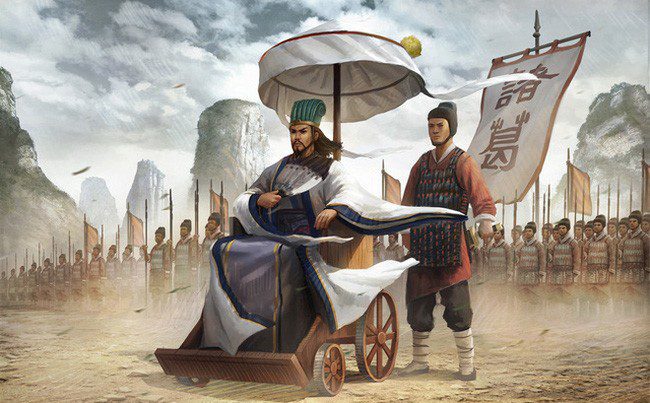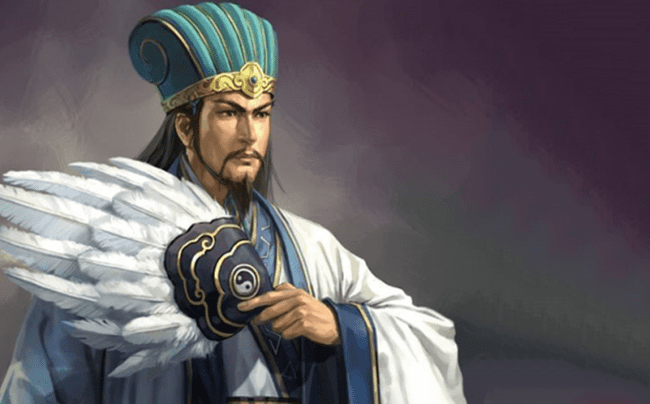Gia Cát Lượng, also known as Kongming, is a prominent figure in Chinese history, recognized as a military strategist, politician, and diplomat during the Three Kingdoms period. Often depicted as a symbol of wisdom and strategy, he is an embodiment of cunning and intelligence, frequently portrayed in literature and film. In traditional media, he is typically represented wearing a blue robe, holding a feather fan, and riding in a chariot. These elements are considered “supernatural artifacts,” accompanying the “divine strategist” Gia Cát Lượng in various major battles.
However, the image of the “divine strategist” riding in a chariot and holding a feather fan is not merely a creative invention of the author Luo Guanzhong but has significant historical roots. Gia Cát Lượng was known to use a four-wheeled vehicle termed a “chariot” and a fan while strategizing on the battlefield, even if he was not physically injured or in any distress. Many people have speculated about the presence of these artifacts as they relate to the well-being of the soldiers under his command, ensuring they remain fit for battle despite the challenges they faced.
1. The Enigmatic Chariot in Warfare
In ancient times, chariots were essential means of transportation, primarily used to convey commanders to the front lines and serve as mobile command centers. They were considered “battle platforms” in military engagements because their mobility could enhance the chances of victory. Besides being used for offensive purposes, riding in a chariot allowed commanders to retreat strategically when necessary, providing a means of escape in dire situations. However, Gia Cát Lượng chose not to utilize the typical battle horse but instead opted for this chariot, which raised eyebrows among military historians.
In essence, Gia Cát Lượng’s choice to use this unique mode of transport instead of traditional horses was symbolic of his strategic mindset and readiness for battle. His decision to ride rather than walk into combat demonstrated his commitment to leading his troops from the front, rather than seeking to escape danger.
Furthermore, participating in warfare required mobility over vast distances. As he aged, Gia Cát Lượng’s physical condition declined, making it impractical for him to ride horses. Therefore, utilizing a specialized vehicle rather than relying solely on a horse was beneficial for him. This vehicle, designed with a larger seat and equipped with larger rear wheels and smaller front wheels, provided enhanced stability compared to riding a horse, allowing him to maintain better control of his direction.
Additionally, during battles, distinguishing the ranks within the enemy forces could help facilitate more effective strategies for his troops. Consequently, Gia Cát Lượng’s choice to ride in a vehicle instead of walking became a representation of authority, aiding soldiers in recognizing their commander amidst the chaos of battle.
2. The Significance of the Feather Fan
Numerous theories have been proposed to explain why Gia Cát Lượng consistently carried a feather fan with him.
The first theory suggests that he used the fan to ward off the heat and prevent exhaustion. Beyond its practical use for cooling, the feather fan also symbolized the commanding presence of a high-ranking military officer, providing protection from dust and wind.
After Liu Bei’s passing, Gia Cát Lượng led his army in several campaigns in the northern regions. The areas where he and Zhuge Liang engaged in battles were often prone to harsh weather conditions, requiring him to utilize the fan to shield himself from high winds and dust storms.
The second theory posits that carrying the feather fan was a strategic tool for commanding the troops effectively. Historical records indicate that military officials typically used white feather fans as a means of identification. This practice was common during the Eastern Wu and Northern Wei dynasties, where items of this color were often employed to denote military leaders. Therefore, it is plausible that Gia Cát Lượng’s use of the feather fan was influenced by these historical precedents.
The third theory suggests that the white feather fan was a gift from the legendary figure Hoàng Nguyệt Anh, which further solidified Gia Cát Lượng’s connection to this emblematic item.
From the aforementioned reasons, it can be observed that Gia Cát Lượng’s choice of vehicle and his use of the feather fan in battle were not merely whimsical; they were calculated strategies that reflected his astuteness and ingenuity as a military leader. Regardless of the validity of the explanations provided, it is universally acknowledged that the two distinctive artifacts associated with Gia Cát Lượng—the chariot and the feather fan—are closely intertwined with the legacy and career of this renowned military strategist.
(Compiled from: Sohu, 163.com)























